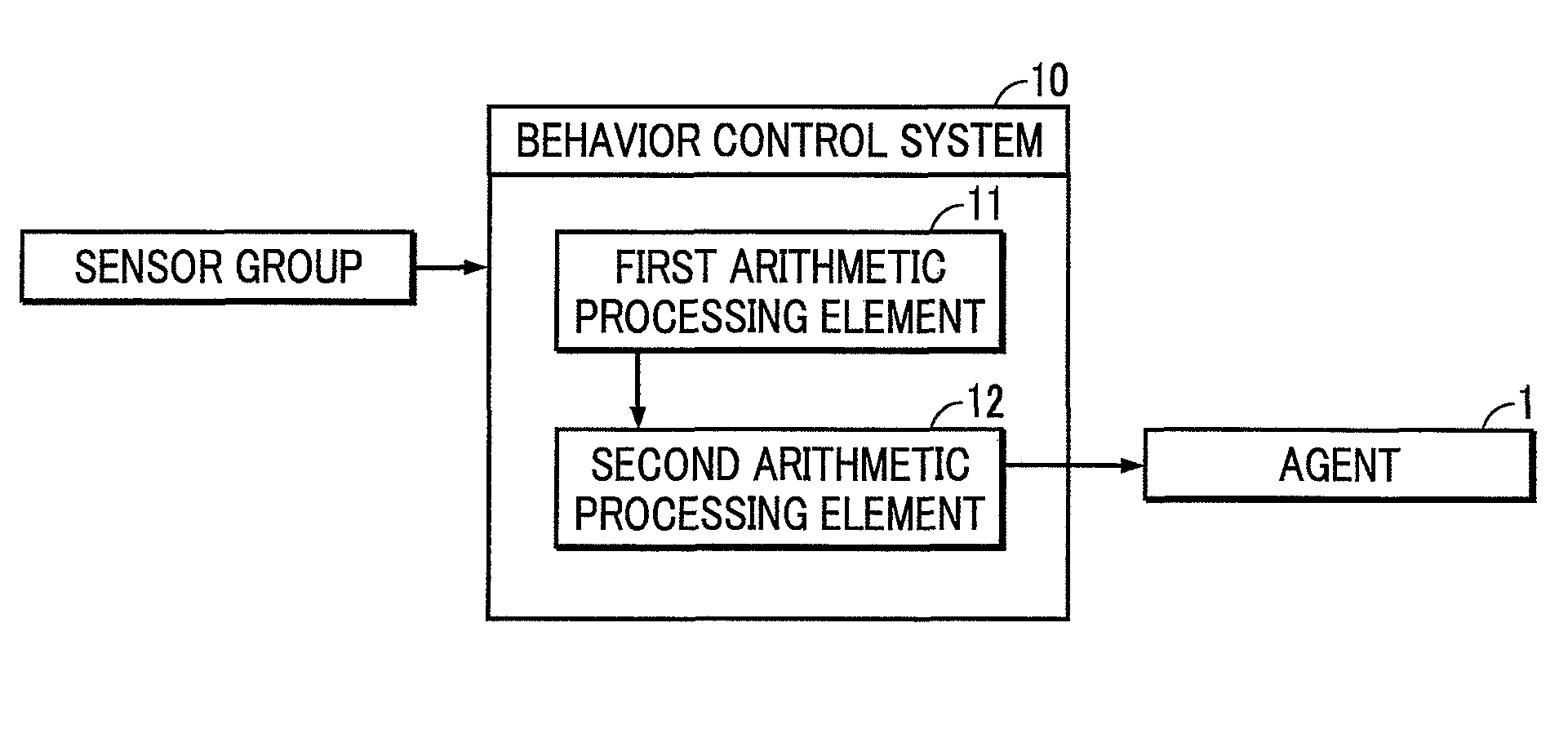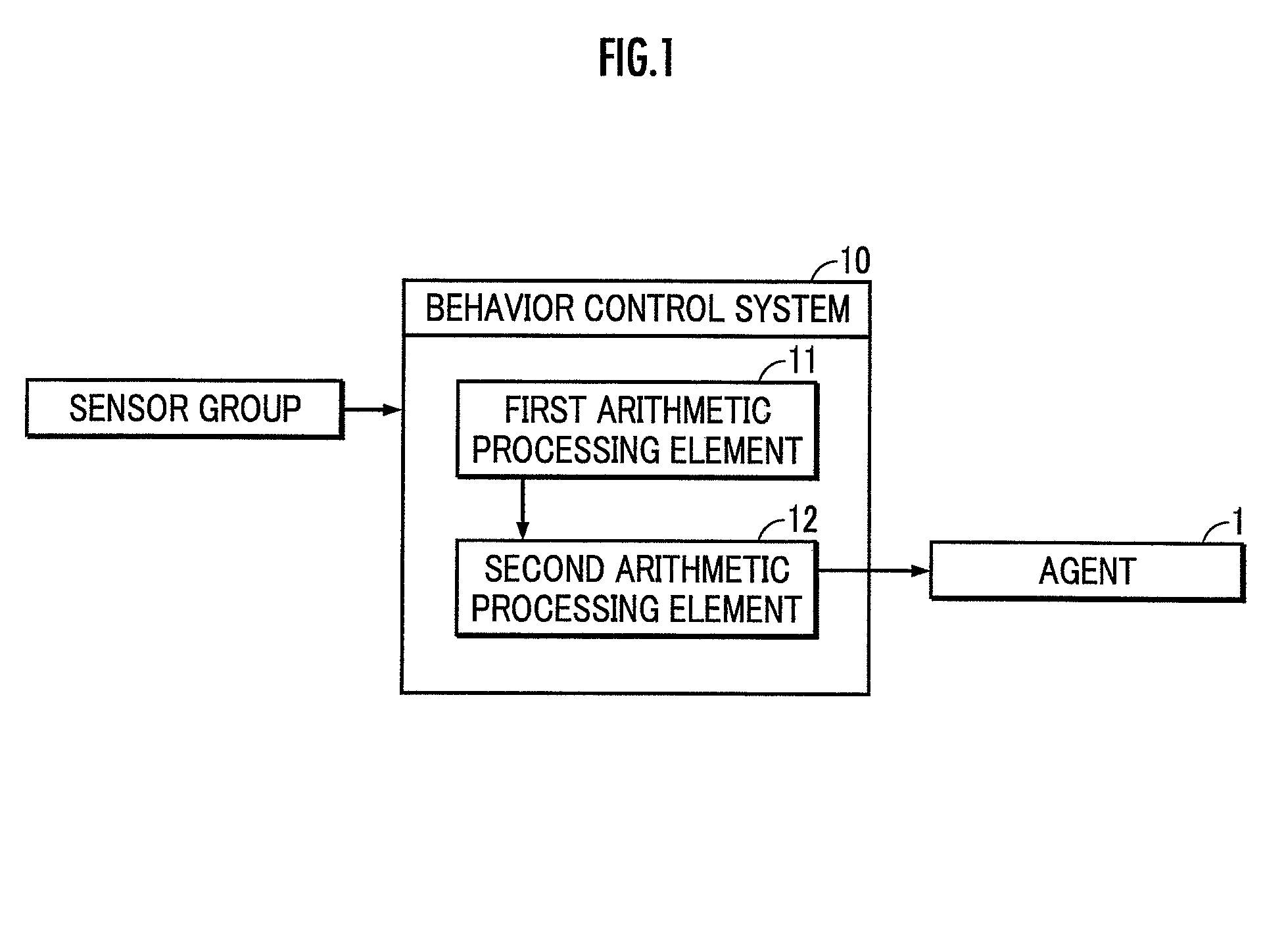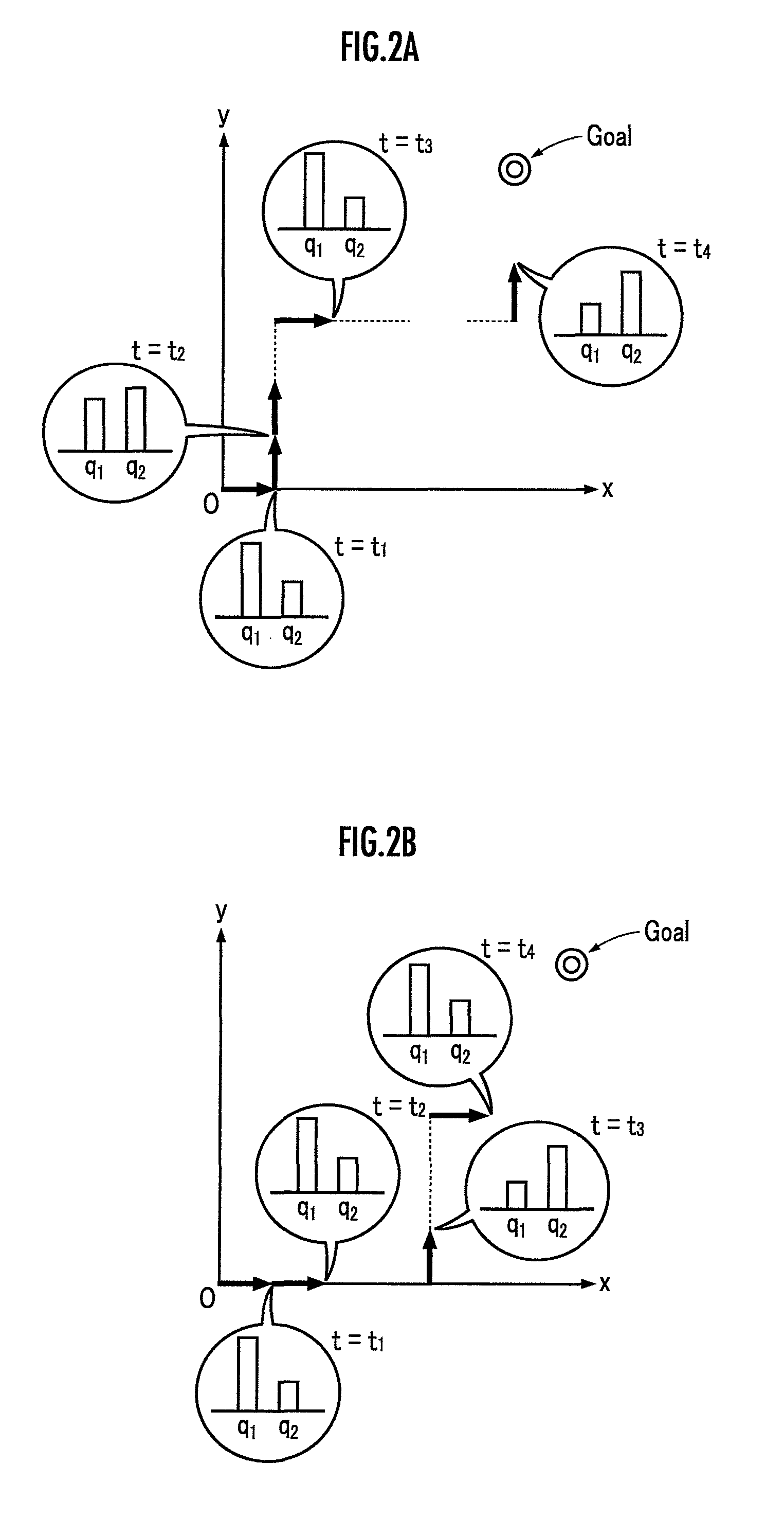Behavior control system
a behavior control and behavior technology, applied in the field of behavior control systems, can solve the problems of difficulty in generating the trajectory of a state variable, temporarily stopping the agent, and affecting the continuity of the behavior, and achieve the effect of high degree of accuracy
- Summary
- Abstract
- Description
- Claims
- Application Information
AI Technical Summary
Benefits of technology
Problems solved by technology
Method used
Image
Examples
first embodiment
[0031][First Embodiment]
[0032]As a plurality of subtasks, an end effector attached to the tip of an arm robot as the agent 1 adopts a first subtask which moves the object 2 in the +x direction by a predetermined amount in the xy-coordinate system and a second subtask which moves the object 2 in the +y direction by a predetermined amount in the xy-coordinate system (See FIGS. 2A and 2B). The initial state of the object 2 is defined by the origin coordinate value (0, 0) of the xy-coordinate system.
[0033](Stochastic Transition Model)
[0034]The stochastic transition model is defined by state variables of the object 2 illustrated in Table 1 and variables representing execution subtasks illustrated in Table 2.
[0035]
TABLE 1Xx-coordinate value of object 2Yy-coordinate value of object 2ΔxAmount of translation of object 2 in x directionΔyAmount of translation of object 2 in y direction
[0036]
TABLE 2S11if argmax (qi) = q10ElseS21if argmax (qi) = q20Else
[0037]Specifically, the stochastic transiti...
second embodiment
[0055][Second Embodiment]
[0056]The first subtask (roll) is a task of tilting the object 2 so as to lift the undersurface (bottom surface) of the object 2 placed on a first floor surface from the first floor surface with one side of the undersurface of the object 2 as an axis line (See FIG. 5A). The term “floor surface” is not limited to the floor surface of a building structure or the like, but means an upper surface of all kinds of structural object such as the upper surface of a desk, a road surface, a ground surface, or the like.
[0057]The second subtask (slide) is a task of translationally moving the object 2 with one side of the undersurface abuts against the first floor surface while maintaining the tilting posture of the object 2 achieved by the execution of the first subtask (See FIG. 5B).
[0058]The third subtask (hump) is a task of tilting the object 2 so that a part of the undersurface of the object 2 abuts against a second floor surface, which is higher by one step than a f...
PUM
 Login to View More
Login to View More Abstract
Description
Claims
Application Information
 Login to View More
Login to View More - R&D
- Intellectual Property
- Life Sciences
- Materials
- Tech Scout
- Unparalleled Data Quality
- Higher Quality Content
- 60% Fewer Hallucinations
Browse by: Latest US Patents, China's latest patents, Technical Efficacy Thesaurus, Application Domain, Technology Topic, Popular Technical Reports.
© 2025 PatSnap. All rights reserved.Legal|Privacy policy|Modern Slavery Act Transparency Statement|Sitemap|About US| Contact US: help@patsnap.com



